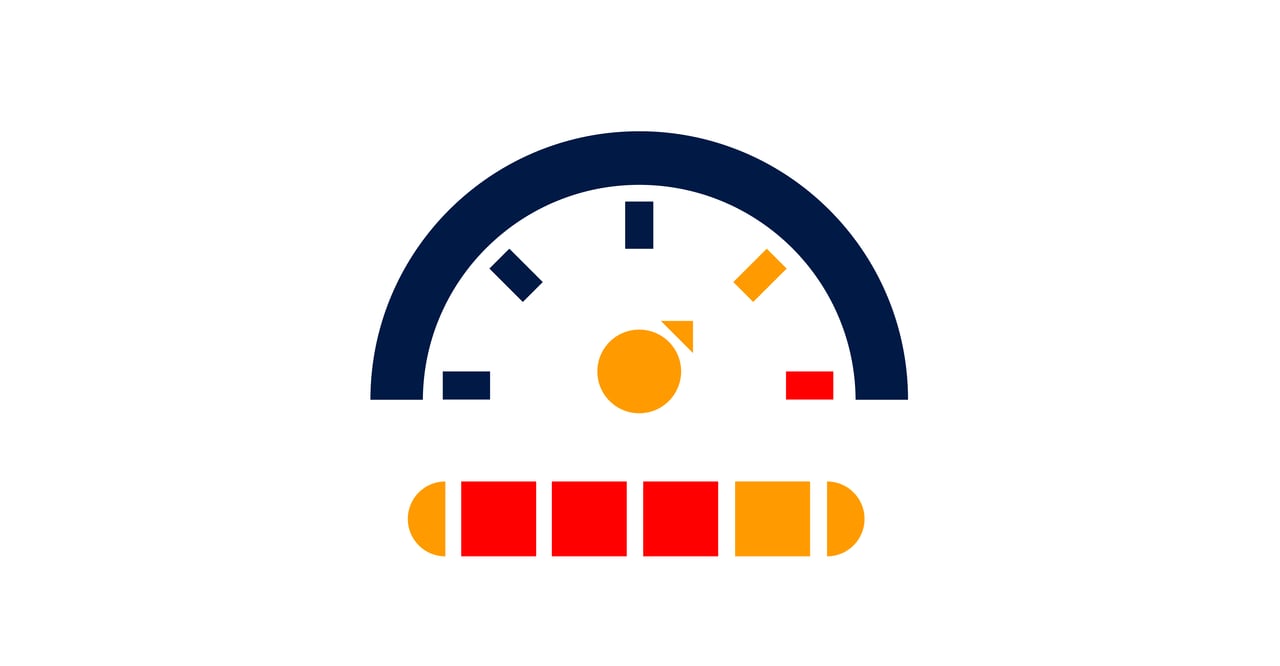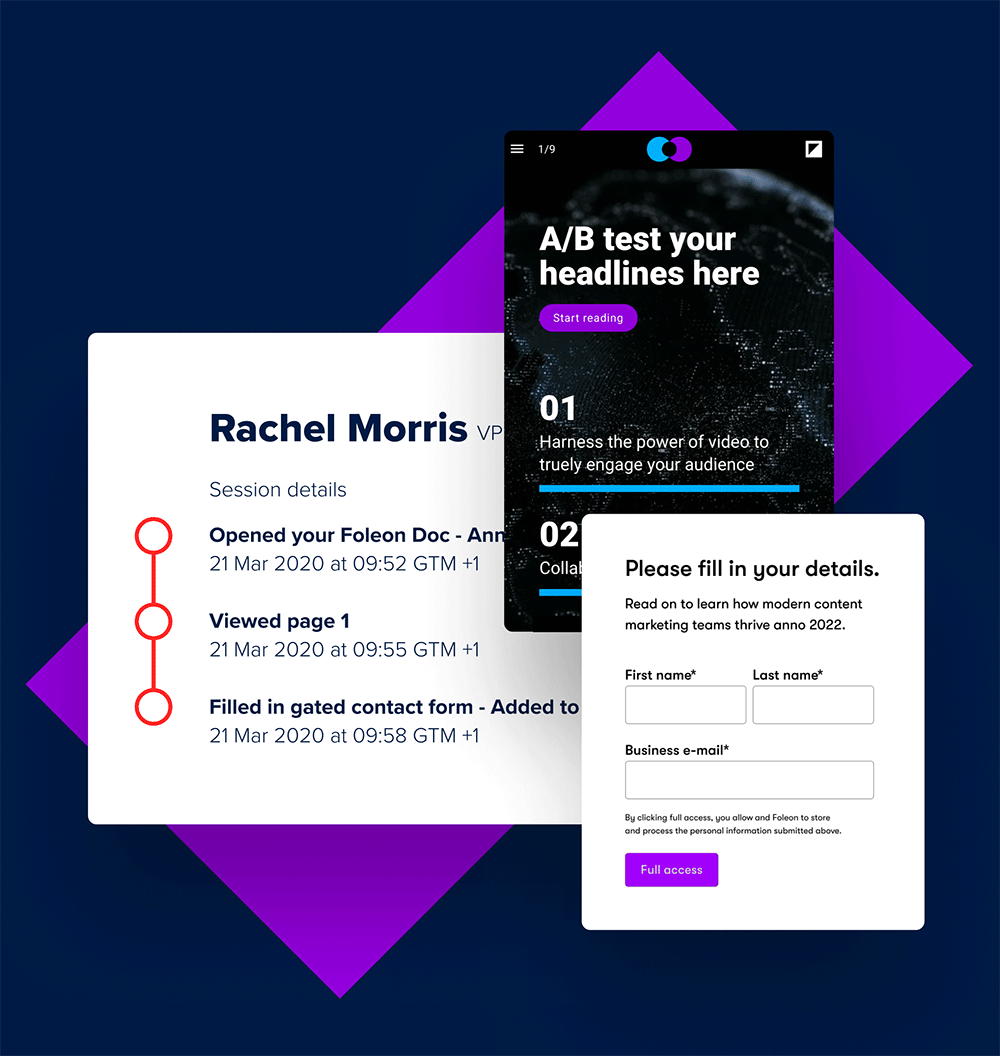For most of us, producing high-quality content that generates leads is our highest marketing priority - but the B2B content landscape, as we know it, has been redefined.
Most marketers use some form of gated content assets — like white papers and eBooks — to generate more leads. Sometimes they're called content offers, content upgrades, lead magnets, or data capture assets.
The process hasn't changed for years; frankly, it's quite awkward. Most companies still offer these assets as non-trackable PDFs and thus have little idea of how well they perform. In today's data-driven world, traditional lead generation assets lack basic modern requirements.
A smart B2B lead generation strategy will help you identify highly engaged leads faster, empower your sales team to spend their time more efficiently, and maximize your budget with real-time campaign insights. By leveraging the right data in the right way, engagement analytics can uncover a wealth of insights to optimize your content for lead generation.
This guide is designed to ensure your lead generation content doesn’t go unnoticed. You will learn how to enhance and take full control of the customer journey by creating smart web content that does more than generate leads — it enhances your entire B2B marketing funnel, guides your audience throughout the buyer’s journey, and thus maximize the ROI of your lead generation efforts.
What is B2B lead generation?
Let’s get this one off the board quickly.
B2B lead generation is acquiring the contact information of potential new customers. There are varying lead types; just ask your sales and marketing department; they’ll happily deliver a private seminar on the topic.
Lead generation brings in new contacts at the beginning of your sales funnel. From here, a mapped-out B2B marketing funnel will help move prospects through the sales cycle by delivering highly relevant content at each stage of the buyer’s journey.
The power of lead generation lies in using content marketing to attract new customers, educate your audience and drive the pipeline. All the things that you and your company need.
Power up your lead generation strategy with personalization
So, what does great B2B lead generation look like in 2024? Which strategies are actually delivering results?
It’s important to note that with advances in lead generation technology the way marketers and salespeople interact with buyers continues to change and evolve faster than ever before. A recent Forbes article suggests that now more than ever B2B and B2C audience behaviors are converging, and in turn, the expectation that B2B customers expect personalization is rapidly increasing.
Creating high-quality content for the entire B2B buyer's journey has become complicated. Even though companies are aware that they should be measuring their content marketing ROI, they acquire data but with very little, if no, insights at all. To make matters worse, most companies lose complete visibility on how their prospects are engaging with their most valuable marketing assets when downloaded as a PDF - or in other words, an offline document. This greatly limits your ability as a marketer to optimize your B2B content and miss out on personalization opportunities that can be achieved with web publications.
New research from Gartner predicts that by 2026, 30% of outbound marketing messages from large companies will be personalized using generative AI tools.
Poor, non-tailored experiences don’t allow you to captivate audiences in real time across any browser, device, or network. That being said, your lead generation strategy should be orchestrated with your readers’ needs in mind.
Fortunately, there are a plethora of ways you can use lead generation technology to enhance your personalization. Check out 6 examples of successful content personalization.

What’s keeping you behind in your lead generation strategy?
The rising competition between businesses and the changing media landscape means traditional marketing methods businesses have long relied on are not nearly as effective in 2026.
In a data-driven market, traditional content assets fail to fulfill the needs of both buyers and businesses.
With that in mind, the needs of your buyer must have the highest priority in order to maximize your ROI on lead generation.
You depend on data to continually optimize your lead generation efforts.
The inability to qualify leads based on their engagement after downloading your content leaves your sales team blind and causes you to allocate resources to the wrong places.
Imagine separating hot leads from cold ones based on engagement inside your gated white papers and eBooks and automatically sending the highly engaged ones directly to your sales team.
In order to analyze what’s damaging your lead generation efforts, you should also understand the needs from the company and marketer’s perspective.
In the matrix below, we have highlighted the current trends in the ever-changing B2B landscape.
|
Buyers |
Business |
Marketers |
|
Higher expectations, personalization |
Digital transformation & CX |
Growing scope, channels, and functional responsibility |
|
Lack of trust, skeptical by default, show vs. tell |
Shift from business-centric to customer-centric |
Demand for impact, transparency, and accountability |
|
Purchase based on experiences rather than product/price |
More members of the Buying Committee |
Tightened budgets and scarce resources - forced to do more with less |
|
Mobile-first, micro-moments, on-the-go, multi-channel, content on-demand |
Longer sales cycles due to accountability and budgets |
Tactical overload: "shiny object syndrome" hacks and "best practices" |
|
Digestible, visual, rich-media |
Misalignment b/w Marketing and Sales |
Record levels for in-demand, high-performing content |
|
Content overwhelm, low attention spans, and less time |
Marketing bottlenecks: strategists, creatives, and Developers |
Operational challenges with scaling results, quantity and quality |
|
Access to info, prefer self-diagnosis and 3rd party research prior to sales |
Big data, little insight: analysis paralysis and lack of actionable data |
Measurement, ROI, and attribution in a multi-touch, multi-channel world |
Your decision to gate content is entirely up to you. We’ve laid down 6 points to consider when deciding whether you should gate your white papers.
Omnichannel business are choosing engaging content experiences
According to a study from the Harvard Business Review, 73% of consumers make buying decisions through several channels.
That said, an omnichannel strategy where customers can switch from one channel to another with total transparency is critical to a successful lead generation process.
Your audience now buys based on experiences. Experience matters more than it ever has before. Content experiences should be your new weapon of choice. It’s the frontline for your company to influence the minds of prospects.
Here are 7 reasons why modern content experiences delivery a better ROI
1. A necessity for the mobile age
We live in a mobile-first world where fifty-four percent of internet traffic is now on mobile. Responsiveness is no longer an option but a necessity. According to the Global Web Index, the typical digital consumer owns an average of 3.23 devices. Being responsive is the only way to maximize your success and content marketing effectiveness.
2. Plan for the 65% by being visual and digestible
As much as we hate to admit it, the majority of people that download our content are going to first investigate if it’s actually worth their time. These are the browsers and skimmers, aka B.S. leads, unless you quickly give them a reason to stick around and meaningfully engage.
3. An interactive experience designed for maximum impact
Passive content gives its place to compelling stories that allow your audience to participate in and engage in real-time. According to LinkedIn, interactive content generates 4-5x more page views than static content. Unlike static PDFs or print materials, interactive content lets you embed vibrant visuals, media, and animations that breathe life into your collateral. With this in mind, your interactive content generates twice as many conversions as passive content.
4. Remove friction with easy one-click access
Nowadays, your audience wants to be able to access information whenever they want, with a minimum level of effort. Instead of switching from landing pages to inboxes, downloadable links, PDFs, and so on, add your lead forms within your white papers and use social login for one-click access.
5. Establish trust by providing value upfront before the gate
When you gate your white papers, your readers are essentially “paying” with their contact information and thus will be expecting something good. You don’t want readers to give up their contact info and leave them with a negative experience. To establish trust, it’s, therefore, necessary to provide valuable content before the gate.
6. Bespoke content keeps it relevant
Valuable tailored content is key to securing your prospects' interest and helping them kick-start their journey down your marketing funnel. Pull data from your CRM or your lead form to tailor your white papers and offer every reader a unique experience.
7. Highly shareable
Content like eBooks and white papers that live on the web is designed to be shared and should include built-in sharing tools. The future of distribution lies in multi-channel publishing. Think mobile, tablet, desktop, and social — all at the click of a button.
Are you looking for ways to optimize your content for lead generation? Check out our guide to the best types of content to generate leads.

How smart lead generation helps you increase lead volume and lead quality
Far beyond increasing the number of generated leads, smart lead generation allows you to identify those highly engaged leads faster, maximize your budget, boost conversions and reduce production time.
Offering an engaging content experience is the first step in making your lead generation smarter. But after creating the content your audience loves, there’s the next step of making sure that content results in an increase in lead volume and lead quality.
10 steps to boost your lead generation ROI
1. Boost form fill rates with social login
Gate your white papers or eBooks with Facebook or LinkedIn to increase form fill rates and get more complete data.
2. Work smarter, not harder
Apply lead scoring based on engagement inside your white papers or eBooks.
3. Identify leads faster
Send highly engaged leads directly to your sales team for follow-up automatically.
4. Segment leads in your CRM
Intelligently sync with your CRM and segment leads based on which pages they read.
5. Understand each lead's individual journey
See how each lead engages with your white papers on your CRM contact timelines.
6. Streamline your funnel with fewer steps
Put the lead form in your white paper and provide direct access rather than using a landing page and form that sends a file via email.
7. Track pass-along
Get lead info from everyone with whom your white papers are shared, even if it's forwarded in an email.
8. Retarget your readers
Put remarketing pixels in your white papers and continue to engage your readers after they leave.
9. Forget about version control
Update your white papers even after distribution to avoid circulating outdated versions.
10. Speed up your turnaround time
Work efficiently and always stay on-brand by using professionally designed templates to create dazzling white papers and eBooks.
Optimize your content based on reader insights
At the risk of sounding like a broken record, if you aren’t measuring how your prospects engage with your most valuable content, you’re not setting yourself up for success.
Measuring the return on content is fundamental to proving the value of your marketing efforts, yet it’s one of the most challenging things for marketers to do.
By leveraging the right data in the right way, engagement analytics can uncover a wealth of insights. Understanding page-by-page engagement will help you maximize not just downloads but lead and, ultimately, sales opportunities and equip you with the necessary tools to assign ROI to our marketing content.
Marketers are now challenged with measuring clicks and downloads, conversions, quantity metrics, and quality metrics such as engagement and lead velocity. There lies a massive opportunity for marketers that are ready to meet this challenge head-on to be able to optimize campaigns based on quantity, quality, and velocity.
6 questions to help you get started with measuring your content ROI
1. How many people downloaded your content?
This one's a no-brainer. If your white papers are distributed as links in emails or gated behind a form on a landing page, the number of downloads serves as a good metric to help you optimize your email copy, perform a/b tests on the CTAs, or remove extra form fields.
2. How much do they actually read?
Do readers get to the end of the white paper, or do they give up a few pages in? The latter could indicate that your content isn't valuable, interesting or that the reading experience is poor. Measuring the time they spend reading, and the number of pages they get through is crucial for understanding your white paper's contribution to bottom-line results.
3. Which pages and topics do people spend the most time on?
Knowing which specific chapters or sections readers spend the most time on is not only useful for optimizing your content, it allows you to segment your audience by their interests and use a tailored follow-up approach. You can use marketing automation to assign different readers to different sales teams based on the topics they focus on.
4. Which links and CTAs perform best?
Including CTAs in your white paper or eBook is smart. Rather than waiting a few days to send a follow-up email, embedded CTAs encourage leads to take immediate action while they're still engaged with your content.
Measuring the performance of links and CTAs within your white paper is vital for succeeding with this strategy. You should continually test the CTA text, placement, accompanying description, and destination and optimize accordingly.
5. Which pages have a high exit rate?
High exit rates will give you clues about the quality of your content. It might indicate that your content is no good, but it also might mean readers found what they were looking for.
If readers exit, you want to ensure they're taking the next step you've planned for them. If they leave before reaching your CTA, for example, you may need to rethink the order of your pages. Like with all content, it's important to test different iterations for the best results.
6. How often is your white paper or eBook shared via social media and email?
As your content is passed along, you get a better grasp of its value and the opportunity to collect data from all those second-degree leads as well — as long as you've gated it properly with an embedded form.
Immediate access to metrics like those mentioned above will help you evaluate your content asset, optimize and perform A/B tests, save time and money in the long term, and make educated decisions without wondering whether your white paper or eBook is working or not.
Conclusion
If your marketing team spends significant time gathering material and conducting research for your content marketing efforts, you are not alone. The big question is, however, did your content work. Did it bring any new customers? If you can’t track your marketing assets beyond downloads, it’s impossible to answer that question.
Find out more about Foleon and see the platform in action via a live demo today.




